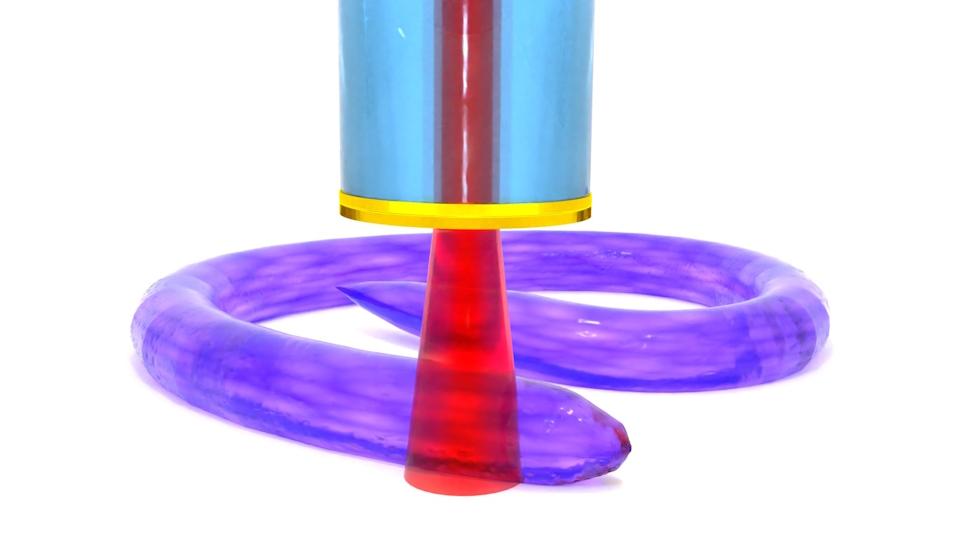In the precision medicine era, the line between products and services is blurred


Personalized and precision medicines are exciting fields that focus on the development of treatment and prevention strategies for a single patient or patient group. The treatments are developed using cutting- edge technologies such as genomic sequencing and genetic engineering, helping to account for the individual variability in both patient and disease characteristics.
This has gained a lot of attention in recent years due to revolutionary breakthroughs in debilitating chronic diseases such as cancer. Traditionally, cancer patients are treated using “one size fits all” interventions like chemotherapy, radiotherapy and surgery. These vary in their effectiveness and result in damage to healthy tissues.
Personalized and precision medicine, however, can offer specialized treatments that target the patient’s unique cancer subtype, its genetic mutations, and the affected tissues.
These therapies involve novel pathways and complex processes to aid and deliver treatment, making each therapy a service in its own right. They depend on many touchpoints, stakeholders, partnerships and interdependencies to treat patients.
As a result, designing suitable services to support patients, caregivers and healthcare providers throughout the treatment pathway is essential. However, doing so successfully depends on understanding how to best approach the design of services in this challenging landscape.
Optimizing the service behind the personalized and precision medicine is crucial for turning the treatment into a viable and differentiated option for patients. To make a real difference and ensure the therapy is competitive, we need to adopt a service design approach.
What is a service design approach?
Service design is a multidisciplinary art and science that enables us to take a holistic view of the service experience, along with a deep understanding of the target groups, such as patients and healthcare professionals, and the context they operate in. This can include using empathic methodologies, such as in-depth interviews and field studies.
The five principles of service design:
1. User-centricity
Gaining a comprehensive understanding of the customer’s needs, how they experience the current service, and how future services address their unmet needs.
2. Co-creation
Involving different stakeholders throughout the design process to gain a wide range of knowledge and expertise, and to further drive customer-centricity across the business.
3. Visual communication
Using visual tools such as sketches, maps and prototypes to improve and ease communication and collaboration between the different stakeholders involved in the creative process (surpassing language and knowledge boundaries).
4. Iteration
Following a ‘learning-by-doing’ approach via continuous prototyping and testing to evaluate solutions before investing time and resources on development.
5. Holistic view
Understanding how the customer experiences the whole service journey and then identifying insight gaps and opportunities for service innovation by looking at the ‘big picture’.
Personalized and precision medicines are naturally patient-centered (compared to traditional pharmaceuticals), as the individual patient is central to the product design. Taking this empathic approach throughout the design process provides a deeper understanding of those needs as well as their context.
This means not only adopting collaborative thinking during the design phase but also during production and development.
To deliver these unique therapies to patients, pharmaceutical companies must partner with a wide range of specialized third parties including laboratories, manufacturers, shipping and storing providers.
Looking at the entire service and all of its touchpoints from above is crucial
By engaging with multidisciplinary teams from all levels across the organization, as well as numerous stakeholders during the co-creation process, you will increase the organization’s knowledge and expertise, resulting in better and more fit-for-purpose solutions. Bring this sense of collaboration into the design process to encourage a higher level of consistency, placement and commitment to the patient and ensure they are at the center of the service philosophy.
Tools for visualizing the service
Novel therapies require designers to be adaptive. New developments such as changes in the supply chain, shorter genomic sequencing process or the need for an additional quality assurance step, often lead to changes to the envisaged treatment pathway. As a result, it is necessary to have a view of the whole service, in one place, which can be continuously updated.
Visual tools such as customer journey maps and service blueprints are a core part of service design. Journey maps (such as the one featured on p.16) provide an overarching view of the customer experience, along with the pain points, gaps, unmet needs and opportunities for engagement. Service blueprints visualize the process behind the service and the people impacted by it. These tools not only make it easier to understand the service, but they can also help simplify communication and increase alignment between the many individuals engaged in the project.
For personalized and precision medicines, patient journeys and service blueprints can help capture the front-end of the service, which is visible to patients, and the back-end processes, which are used by healthcare professionals. This gives us insights into the interactions, touchpoints and relationships between the patient and various stakeholders, such as the different healthcare professionals, carers and patient groups. Looking at the entire service and all of its touchpoints from above is crucial for making improvements that enrich the customer experience.
A CAR-T treatment case study
CAR-T is a new individualized cancer immunotherapy that has taken precision medicine to a new level. In a nutshell, CAR-T therapy involves extracting T-cells (a type of white blood cells that play a key role in immune response) from the patient, genetically engineering them to target the cancer cells and infusing them back into the patient’s body.
The CAR-T treatment pathway for a blood cancer involves a uniquely large number of stakeholders, touchpoints and interdependent processes that take place both in the front-end (i.e. visible to the patient) and back-end (i.e. visible to healthcare professionals). Below is a high- level overview of a typical CAR-T journey that can illustrate this complexity:
Click here to read the full article












